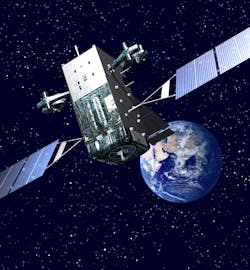Satellite systems are known for effective communications capabilities, but they also provide a literal high-level view of potential missile attacks. In the case of the Space Based Infrared System (SBIRS), it is infrared (IR) technology that provides early warning of launched missiles and other potential threats from space (see photo). Upgrades to the SBIRS constellation by Lockheed Martin include enhanced processing power for quicker response times to formerly hard-to-detect threats.
The overall SBIRS system’s enhancements include a Block 10 upgrade in the form of a new ground station at Buckley Air Force Base in Colorado. The ground station collects data from satellite sensors and converts it into actionable information for defense, intelligence, and civilian applications. This new ground station provides faster data collection times, improved threat detection, and improved target tracking of IR information to see dimmer events faster.
The ground station consolidates command and control of legacy Defense Support Program satellites, SBIRS geosynchronous satellites, and satellites with highly elliptical orbits into a single operating system. It boosts the processing capabilities of sensor data and provides usable information for military and intelligence community users.
Although work on a ground station may be less glamorous than the launch of a satellite into a growing constellation, the importance of the new ground station is not to be taken lightly, according to David Sheridan, vice president of Lockheed Martin’s Overhead Persistent Infrared Systems mission area. “While launching a satellite is a highly momentous event, the work continues 24/7 on the ground within command and data processing centers,” he says.
“With the Block 10 upgrade, the mission-critical data supplied by SBIRS is now being managed from a single ground control station,” Sheridan continues, “which is not only cost-efficient, but also more effective in providing our Air Force operators with the ability to characterize threats and quickly provide that information to military commanders deployed around the globe.”
With the deployment of the ground system, Lockheed Martin will provide ongoing operations and sustainment support, while continuing to enhance the system through additional cyber security capabilities, automation features, and continued evolutions to support Air Force requirements.


